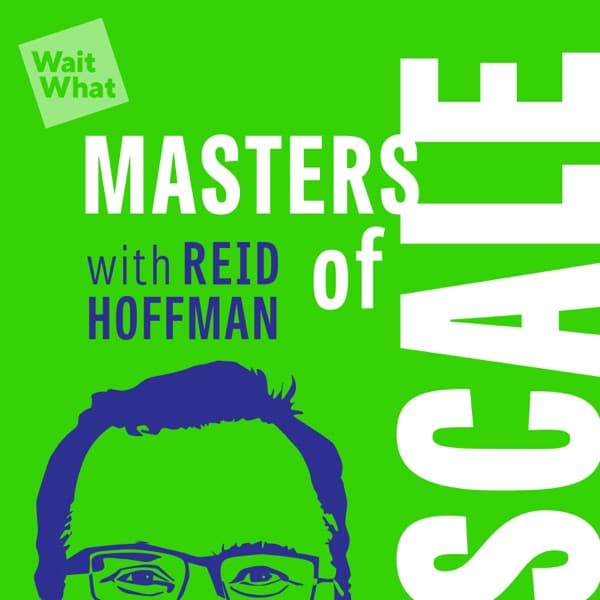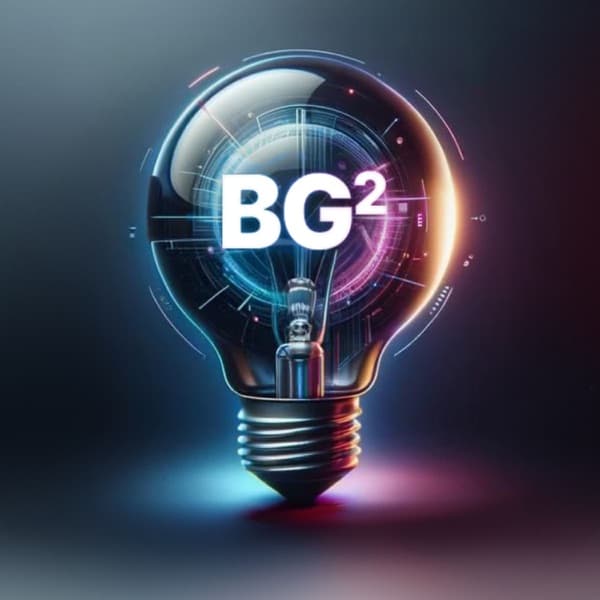TechCrunch: The discussion focuses on the evolving landscape of venture capital, particularly in relation to AI and the geographical considerations for startups.
a16z: DeepSeek R1 is a new reasoning model from China that combines multiple innovations to improve AI performance, focusing on reasoning capabilities and efficient training methods.
The Twenty Minute VC (20VC): Venture Capital | Startup Funding | The Pitch: Lovable, a European startup, is rapidly growing by turning ideas into apps with just a prompt, achieving $2 million ARR weekly and surpassing ChatGPT in retention rates.
TechCrunch Startup News: Flora is a startup aiming to revolutionize creative work with an AI-powered infinite canvas, offering more control and collaboration for artists.
TechCrunch Startup News: CloudSmith offers a modern solution for managing software supply chain vulnerabilities with its cloud-native Artifact Management Platform.
TechCrunch - Is Silicon Valley still the best place for startups? Insight Partners’ Ryan Hinkle doesn’t think so
The conversation with Ryan Hinkle from Insight Partners delves into the dynamics of venture capital, emphasizing the importance of geographical location for startups. Hinkle argues that while Silicon Valley offers a vast talent pool, it is not the only viable location for startups. He highlights the importance of finding a location that offers loyal and affordable talent, which can be outside traditional tech hubs like Silicon Valley. The discussion also touches on the challenges startups face in maintaining financial transparency and the importance of having robust systems in place to track financial metrics, especially when seeking investment. Hinkle stresses the need for startups to be prepared with detailed financial records and systems that can support growth and attract investment. He also discusses the current state of the venture capital market, noting a shift towards more cautious investment strategies following the recent market corrections.
Key Points:
- Silicon Valley is not the only option for startups; consider locations with affordable and loyal talent.
- Startups must maintain detailed financial records to attract investment.
- The venture capital market is shifting towards cautious investment strategies post-market corrections.
- AI is driving a new wave of investment, but profitability models are still uncertain.
- Founders should ensure systems are in place to track financial metrics effectively.
Details:
1. 🎙️ Introduction and Theme Music
- The episode is sponsored by Baker Tilly, a top 10 firm in accounting, tax, and advisory services.
2. 🔍 Exploring Tech Trends with Industry Experts
2.1. Introduction
2.2. Purpose of Exploring Tech Trends
3. 📈 AI's Breakout Year and Expert Insights
- 2024 marked a significant breakout year for AI, showcasing its transformative impact across diverse industries, such as healthcare, finance, and logistics, with major improvements in decision-making and operational efficiency.
- TechCrunch editor Julie Bour engaged in a discussion with Ryan Hinkle from Insight Partners, emphasizing AI's crucial role in venture capital and private equity sectors, where AI-driven companies are attracting increased investments.
- Insight Partners, a global venture capital and private equity firm, has notably increased its focus on investments in high-growth technology and software companies leveraging AI, underscoring a strategic shift towards AI-centric portfolios.
- Specific examples include AI's role in reducing product development cycles from 6 months to 8 weeks and improving customer retention by 32% through personalized engagement strategies.
4. 👥 Ryan Hinkle's Career Journey and Insight Partners
4.1. Ryan Hinkle's Professional Path
4.2. Strategic Insights from Insight Partners
5. 🛠️ Challenges and Strategies in Venture Capital
- Data Integration Issue: Companies often operate with separate systems for invoices, bookings, and contract durations, complicating data integration. Ensuring synchronization of these systems is crucial for accurate calculations and efficient operations.
- Sales and Growth Challenges: Rapid growth can obscure underlying deficiencies in sales mathematics and unit economics. It's essential for companies to refine these as growth slows or competitive pressures mount.
- Early Financial Oversight: Contrary to popular belief, early-stage companies require financial oversight. While a CFO isn't necessary, having a system to track financial steps from quote to cash with a unique identifier is critical for data integration.
- Importance of Data Accuracy: An instance where a company's retention rate was 20% worse than expected highlights the need for accurate data. Inaccuracies can significantly impact valuations and investor trust.
- VC Support for Startups: VCs investing resources to help startups fix data issues demonstrate a commitment to overcoming company limitations rather than insight limitations.
- Due Diligence and Proof: Post-pandemic, VCs demand rigorous proof of financial health with accurate, verifiable data being crucial to securing investment as demand signals have become volatile.
- Shift in VC Evaluation: There's a move from trusting potential narratives to requiring concrete, visible data proof, increasing the burden on startups to maintain and present accurate records.
6. 📊 Importance of Financial Transparency in Startups
- Investors increasingly emphasize financial metrics, with a strong focus on unit economics, due to heightened due diligence requirements.
- The increased focus on financial transparency is part of a broader trend referred to as 'the great reset,' impacting how startups are evaluated.
- Insight channels, such as LinkedIn, provide valuable discussions on financial transparency and IPO market trends.
- The on-site team at Insight is dedicated to supporting startups in their growth journey, emphasizing the importance of transparency in scaling up.
7. 👋 Closing Remarks and Production Credits
- Listeners can engage with the show via Equity pod on various platforms such as onx and threads.
- Equity is produced by Teresa Loom, with editing by Kell, highlighting the team behind the production.
- Acknowledgement of TechCrunch's audience development team, emphasizing collaboration and support.
- Encouragement for continued listener engagement until the next episode.
a16z - DeepSeek, Reasoning Models, and the Future of LLMs
DeepSeek R1 is a reasoning model developed in China that has significantly impacted AI model rankings by introducing advanced reasoning capabilities. The model is built on a series of innovations, including multi-head latent attention and the GRPO algorithm for reinforcement learning. These techniques allow the model to perform complex reasoning tasks efficiently, using less computational power than traditional models. The training process involves multiple stages, including supervised fine-tuning and reinforcement learning, which help refine the model's ability to generate accurate and human-like responses. The model's ability to self-learn and improve without constant human intervention marks a significant advancement in AI technology. Practical applications of DeepSeek R1 include its use in domains requiring complex problem-solving, such as mathematics and coding, where the model can verify solutions independently. This capability reduces the need for extensive human-generated data, making the training process more efficient and cost-effective. The open-source nature of DeepSeek R1 allows for widespread adoption and further innovation in AI development.
Key Points:
- DeepSeek R1 uses advanced reasoning techniques to improve AI performance.
- The model combines innovations like multi-head latent attention and GRPO for efficient training.
- It reduces reliance on human-generated data by self-learning and verifying solutions.
- Open-source availability encourages widespread use and further AI innovation.
- The model is particularly effective in domains requiring complex problem-solving.
Details:
1. 🌍 Understanding DeepSeek's Emergence and Impact
- DeepSeek is a cutting-edge reasoning model that recently emerged from China, quickly capturing industry attention due to its advanced capabilities.
- The model ranks highly in performance metrics, outperforming many existing models, which has sparked both excitement and concern in the AI community.
- Industry experts have noted DeepSeek's potential to significantly influence AI development paths and competitive dynamics.
- Specific features of DeepSeek include improved data processing and reasoning capabilities, contributing to its superior performance metrics.
- The reception of DeepSeek highlights its potential to shift AI standards, prompting discussions about its implications for future AI innovation and ethical considerations.
2. 🔍 DeepSeek's Open Sharing and Techniques
- DeepSeek openly shares their model weights and techniques, providing valuable insights into reasoning model construction.
- These shared techniques are expected to become foundational in future state-of-the-art models.
- Existing models from OpenAI and Google already exhibit structural similarities to DeepSeek's shared methodologies.
3. 🚀 The Surge of Reasoning Models
- Developments in reasoning models include notable examples like deeps math B3, B2, and R1, which represent significant advancements.
- Analysis of current GPU requirements reveals critical insights for both inference and training processes, indicating potential areas for optimization.
- Recent rankings of top AI models show a marked improvement in capabilities, underscoring the rapid progress in AI technology.
4. 🤖 DeepSeek R1 vs. GPT: A Comparative Analysis
4.1. Introduction and Overview
4.2. Reasoning Approach of GPT 40 Mini
4.3. Reasoning Approach of DeepSeek R1
5. 🏋️ Advanced Training Techniques: SFT and RL
- Small models can achieve high-quality results with advanced training methods like SFT and RL.
- Traditional training involves collecting extensive text data from the internet, including question-answer pairs, which is critical for efficient model training.
- Pre-training requires large computer infrastructures, such as 10,000 h100s, to process comprehensive internet data effectively.
- Supervised Fine Tuning (SFT) uses human-generated examples to guide model behavior, ensuring accuracy and specificity in responses.
- Without SFT, base models often produce inaccurate or non-specific answers, highlighting its crucial role in training.
- Reinforcement Learning (RL) further refines model performance by using feedback mechanisms to optimize decision-making processes.
- An example of RL's effectiveness is seen in improving interactive tasks where models learn from trial and error to enhance outcomes.
6. 💡 DeepSeek R1's Methodology and Innovations Unveiled
- DeepSeek R1 employs a multi-phase training approach, starting with a fully automated pre-training phase utilizing large datasets for next-token prediction.
- Supervised Fine Tuning (SFT) is the second phase, where the model is trained to interact effectively with humans by learning from structured data formats, such as those from Stack Overflow, which include quality-assured question and answer pairs.
- Following SFT, Reinforcement Learning with Human Feedback (RLHF) is employed, where human evaluators score the model's responses to refine its accuracy based on preference data.
- The human-in-the-loop process is a defining innovation in DeepSeek R1, ensuring high-quality and accurate model responses by actively involving human feedback in the training process.
- DeepSeek R1's methodology not only focuses on technical implementation but also emphasizes strategic human involvement for enhanced model performance and quality assurance.
7. 🔄 Evolution of R1 and Self-Learning Capabilities
- R1 is a culmination of multiple innovations from various models since late 2023, integrating techniques like multi-head attention and the GRPO algorithm for reinforcement learning training.
- The development process involved training a deep learning math model, Deep Seek Math, known for its strong reasoning capabilities in specific tasks.
- A significant aspect of the R1 model is its ability to learn from itself, marking a novel approach in model training.
- The methodology and model weights have been made open-source, providing transparency and facilitating further research.
8. 🧩 Addressing Challenges in Model Training
- Reasoning processes significantly enhance problem-solving capabilities in math and coding by allowing solution verification.
- The R1 reasoning model has improved model quality through reinforcement learning (RL), specifically focusing on verifiable domains like math and puzzles.
- DP zip's B3 model, released in December, led to the development of R1, which applied RL to enhance model performance in reasoning tasks.
- Challenges faced by the R10 model included language switching and output readability, which R1 aims to address using insights from R1 Z.
- The R10 model showed improvements in reasoning and math benchmarks but needed enhanced adaptability in multi-language contexts.
- R1's development was influenced by the limitations observed in R10, using RL to refine effectiveness and overcome identified challenges.
9. 📊 Multi-Stage Training Processes for R1
9.1. Deep Seek V3 and R1 Training
9.2. Training Challenges and Innovations
10. 🎯 Enhancing Training Efficiency in Reasoning Models
- Deeps i1 initially followed a classical training approach, similar to DC V3, which limited its reasoning capabilities because it was designed as a language model.
- DC I10 demonstrated improved reasoning abilities over SE R1 but exhibited erratic behavior, like random language switching, affecting usability.
- To stabilize DC I10, the training incorporated two supervised fine-tuning phases and two large-scale reinforcement learning phases, focusing on usability improvements.
- The training strategy emphasized instructing the model to use step-by-step reasoning through prompts, reinforcing only correct and well-reasoned responses.
- Effectiveness was measured by response length, which showed significant increases over training steps, indicating enhanced reasoning depth.
11. 💰 Balancing Cost and Efficiency in Model Development
11.1. Model Improvements
11.2. Cost Efficiency Strategies
12. 🚀 Technological Innovations at DeepSeek
12.1. Training Methodology
12.2. Cost Efficiency
12.3. Computational Optimizations
13. 🌟 Implications of Reasoning Models on AI Advancement
- Model performance has plateaued, with top-tier models' test scores becoming more clustered, indicating diminishing returns from scaling model size alone.
- Open source models are catching up to top-tier, proprietary models, reducing the gap that existed 18 months prior.
- The introduction of reasoning models demands 20 times more inference resources, implying a need for significant infrastructure upgrades.
- There is a shift in computing focus from primarily training to include extensive test-time inference, requiring more computational resources.
- Training data limitations have been reached as most models were trained on similar internet datasets, resulting in similar quality across models.
- New methods like reinforcement learning and chain of thought processes are necessary to further improve reasoning abilities without excessive data scaling.
- Open-source reasoning models are now comparable in quality to some proprietary models, fostering innovation and competition within the AI industry.
- Advancements in reasoning models necessitate more GPUs to handle increased computational demands for self-reasoning and self-improvement tasks.
14. 🔮 Future Prospects and Accessibility of AI Models
- AI infrastructure improvements are expected to accelerate the development of better models and applications, enhancing use cases and verticals.
- Applying reinforcement learning (RL) directly to smaller models like Llama did not yield significant improvements; however, distillation from larger models like R1 proved more efficient and effective.
- Distillation involves generating a wealth of questions, answers, and long-chain thoughts, proving to be a superior method for training models compared to RL on small datasets.
- Distilled models can be run effectively on local machines, providing powerful reasoning capabilities without the need for extensive cloud infrastructure.
- Open model weights allow for easy downloading and running of models locally, which raises concerns about data privacy and security, particularly regarding where data is processed.
- The ability to quantize models for smaller devices, combined with effective distillation, results in highly efficient AI systems that can operate on limited hardware.
The Twenty Minute VC (20VC): Venture Capital | Startup Funding | The Pitch - 20VC: Lovable on Hitting $17.5M in ARR in 3 Months | Adding $2.1M ARR Every Week | Hitting 85% Day 30 Retention: Better than ChatGPT | The Story of Europe's Fastest Scaling Company with Anton Osika

Lovable, co-founded by Anton Asika, is a European startup that allows users to transform ideas into apps instantly using AI. The company has achieved remarkable growth, adding $2 million in annual recurring revenue (ARR) weekly, and has a 30-day retention rate of 85%, surpassing ChatGPT. The startup's success is attributed to its focus on talent and culture, with a preference for hiring ambitious junior talent over experienced individuals. Lovable's journey began as a side project after the release of ChatGPT, and it quickly gained traction due to its innovative approach and community engagement. The company emphasizes the importance of execution and maintaining a strong product focus, avoiding distractions like unnecessary features or executive hires. Despite rejecting Y Combinator for its potential dilution, Lovable raised a significant pre-seed round to fuel its growth. The startup's strategy includes leveraging Europe's talent pool while maintaining a global outlook, aiming to be the best platform for builders to create products. Lovable's approach to product development involves rapid iteration and user feedback, focusing on delivering quick 'aha' moments to enhance user experience. The company plans to expand its offerings by integrating more comprehensive features for founders, akin to Y Combinator's support, while maintaining its core focus on product excellence.
Key Points:
- Lovable adds $2 million ARR weekly, surpassing ChatGPT's retention rates.
- Focus on hiring ambitious junior talent over experienced individuals.
- Rejected Y Combinator to avoid dilution, raised $8 million pre-seed instead.
- Emphasizes rapid iteration and user feedback for product development.
- Plans to integrate comprehensive features for founders, similar to Y Combinator.
Details:
1. 🚀 Explosive Growth: Revenue Milestones
- Launch initiated significant growth with $1 million ARR achieved per week.
- Inquiry about the current weekly growth rate is ongoing, with a focus on maintaining or improving this trajectory.
- The strategic implementation of growth initiatives has been central to sustaining this momentum.
2. 🌟 Talent and Culture: The Backbone of Success
- Month one retention rate for paying customers is higher than ChatGPT's, indicating effective customer engagement and satisfaction strategies.
- Prioritizing talent and culture is crucial for success, as it directly impacts business performance and growth.
- Europe has a larger pool of raw available talent, offering a strategic advantage in talent acquisition.
3. 💡 Lovable's Origin: From Idea to Reality
- Execution is the only thing that matters.
- Outperforming in execution is a key competitive advantage.
- Anton Asika, co-founder and CEO at Lovable, leads Europe's fastest-growing startup.
- Lovable's strategic focus on execution has driven its rapid growth, setting it apart in the competitive landscape.
- Under Anton Asika's leadership, the company has harnessed superior execution as a consistent edge over competitors.
- The company's growth metrics reflect its execution success, positioning it as a leader in its market.
4. 📢 Powerful Partnerships: Brand Sponsors' Role
- Kajabi's customers have collectively generated over $8 billion in total revenue.
- Kajabi allows its users to retain 100% of their earnings, with the average creator earning over $30,000 annually.
- Kajabi is an all-in-one creator commerce platform offering various tools, including websites, email marketing, digital products, payment processing, and analytics, starting at $69 per month.
5. 🌍 Navigating Global Expansion: Payroll and Compliance
- Kajabi offers a platform to build and grow online businesses without taking a cut of revenue, making it a cost-effective solution for entrepreneurs.
- 20 VC listeners can access a 30-day free trial of Kajabi by visiting Kajabi.com/20VC, providing an opportunity to explore the platform's capabilities risk-free.
- The offer aims to attract new users by giving them firsthand experience of Kajabi's features, which include website building, product marketing, and customer engagement tools.
- This strategic move supports global expansion efforts by enabling businesses to manage their online presence efficiently.
6. 🔑 Building Lovable: Lessons from Past Ventures
6.1. Remote Hiring and Infrastructure Scaling
6.2. Lessons from Depict
6.3. Founding Lovable and GPT Engineer
6.4. Building and Launching Lovable
6.5. Growth and Product Development
7. 📈 Scaling Strategies: Growth, Culture, and Challenges
- The most successful founders typically range in age from 30 to 35, balancing experience and energy, avoiding the extreme ends of youth and older age, which can lead to naivety and fatigue, respectively.
- Attempting to change company culture to a slow-moving, layered management style when expanding to 40 employees was a major mistake, as it proved unnecessary and counterproductive.
- Hiring executives prematurely can hinder progress; instead, scaling is more effective with smart generalists who can be empowered to drive growth.
- Significant scaling of user base and revenue naturally evolves company culture, which risks diluting ownership and care if not properly managed.
- Raising a Series A not only accelerates growth but adds strategic value through partnership with experienced investors such as Frederick, who contributed to Spotify's growth.
- In competitive markets, execution excellence outweighs merely raising funds, as outperforming rivals through superior execution is crucial for success.
- Execution improvement involves expediting decision-making and ensuring clarity in communication to align all team members.
- Focusing on fewer initiatives can enhance organizational effectiveness and clarity, avoiding dilution of effort and ensuring better resource allocation.
8. 🇪🇺 Europe vs. Silicon Valley: The Talent Debate
8.1. Cultural Differences and Impact on Startup Success
8.2. Challenges and Opportunities for Startups in Europe
9. 📊 Engaging Users: Product Development Insights
- The European startup ecosystem benefits from an 'underdog mentality' which fosters resilience and innovation.
- Leveraging Europe's skilled engineers while targeting the US market can create significant business opportunities.
- Concerns about sustainability of revenue are countered by strong initial retention metrics, with month-one retention rates at 85%, surpassing ChatGPT.
- Emphasizing 'aha moments' and educational touchpoints can enhance user retention and engagement.
- The primary metric of success is the number of users who successfully host projects, with a current count of nearly 40,000 paying users.
10. 🤖 AI Models: Competitive Edge and Strategy
10.1. Optimizing AI and Core Models
10.2. AI Models Utilized
10.3. Brand Recognition and Product Strategy
10.4. Enterprise Revenue and Talent Movement
10.5. Market Concerns and Opportunities
10.6. Shift from PLG to Enterprise
11. 📊 Metrics That Matter: Retention and Market Presence
- Lovable aims to become the best platform for builders to create products, targeting to attract a million talented builders, which would open doors to enterprise opportunities.
- Shopify's success is attributed to its narrative of empowering entrepreneurs and its ability to iterate quickly to meet e-commerce needs, which has been crucial in developing their product.
- The importance of storytelling in customer engagement is highlighted, as seen in Shopify's effective communication and branding strategies.
- The aspiration to integrate Y Combinator's comprehensive startup support system into Lovable is mentioned, including marketing infrastructure and operational setups like Stripe.
- The roadmap for Lovable includes partnerships and APIs integration to enhance product offerings, indicating potential growth opportunities.
- Concerns over competitors with superior marketing capabilities are noted, emphasizing the importance of having a strong product and brand awareness.
12. 💼 Smart Investment: Strategies and Leadership in Focus
12.1. Smart Investment Strategies
12.2. Leadership Qualities and Company Growth
13. 🔮 Future Visions: AI's Impact on Society
13.1. AI SaaS and Pricing Models
13.2. AI in Healthcare
TechCrunch Startup News - Flora is building an AI-powered ‘infinite canvas’ for creative professionals

Flora, founded by Weber Wong, is a startup focused on enhancing creative work through an AI-powered infinite canvas. Unlike existing AI tools that lack creative control or traditional creative software that is often unintuitive, Flora integrates with existing AI models to provide a visual interface for generating text, images, and video. This allows users to map out creative processes on a shared canvas, facilitating collaboration. Initially targeting visual design agencies, Flora is iterating its product with feedback from designers at Pentagram, aiming to significantly increase creative output. Wong, with a background in art and technology, emphasizes that Flora is not about building better AI models but about providing a tool that unlocks new creative possibilities. The startup is backed by notable investors and offers a free version with limited projects, with professional pricing starting at $16 per month.
Key Points:
- Flora offers an AI-powered infinite canvas for creative work, integrating with existing models for enhanced control and collaboration.
- The startup targets visual design agencies, iterating its product with feedback from Pentagram designers to boost creative output.
- Flora's approach focuses on the interface rather than developing new AI models, aiming to unlock new creative possibilities.
- The product is available for free with limited projects, with professional pricing starting at $16 per month.
- Flora is backed by investors like A16Z Games Speedrun and Menlo Ventures, emphasizing its potential impact on creative industries.
Details:
1. 🎓 Transform Your Business with an MBA
1.1. Program Details
1.2. Enrollment Information
2. 🚀 Introducing Flora: A Creative Revolution
2.1. The Need for Advanced Creative Tools
2.2. Flora's Strategic Approach
3. 🖌️ Flora's Vision and Artistic Impact
3.1. Flora's Unique Offering and Vision
3.2. User Interaction and Collaboration
3.3. Launch and Industry Reception
4. 🔍 Addressing AI Concerns with Flora
- Flora leverages AI models developed by other companies, ensuring alignment with established societal standards and practices for AI.
- The company actively discourages 'AI slop', advocating for responsible and ethical use of AI technologies in creative industries.
- Flora seeks to transform the creative landscape by providing artists with innovative tools, drawing a parallel to the impact of the Kodak Brownie camera on photography, thus democratizing access to new creative opportunities.
5. 💼 Flora's Support and Accessibility
5.1. Flora's Backers and Investor Support
5.2. Pricing and Accessibility
6. 💰 Mastering Personal Finance with Andrew Giancola
- The Personal Finance Podcast, hosted by Andrew Giancola, is positioned as a masterclass in money management, wealth building, and achieving financial freedom, offering detailed and actionable strategies beyond typical advice.
- The episode '25 Things to Do with Your Money in 2025' provides a structured financial plan, highlighting its practical and strategic value, with a focus on proactive wealth management and financial independence.
- Andrew Giancola emphasizes a holistic approach to personal finance, advocating for creating a life where money works for individuals, thereby promoting financial independence.
- Listeners are encouraged to think beyond conventional spending cuts and adopt innovative financial strategies, aligning with long-term wealth-building goals.
TechCrunch Startup News - Cloudsmith raises $23M to improve software supply chain security

CloudSmith addresses the vulnerabilities in the software supply chain by providing a cloud-native Artifact Management Platform. This platform serves as a private registry for software packages, ensuring they are always available for future builds, even if they change or disappear from their original sources. It scans for vulnerabilities, licensing issues, and malware, providing a security checkpoint for open-source dependencies. CloudSmith's approach helps enterprises maintain oversight of their software artifacts, whether private, public, or open source. The company recently raised $23 million in a Series B funding round to expand its operations and invest in AI applications. This funding will help CloudSmith enhance its platform to offer actionable insights for developers, enabling them to choose safer open-source packages and create curated internal registries. The platform aims to transform software package consumption data into valuable insights, assisting developers in making informed decisions about package selection.
Key Points:
- CloudSmith provides a cloud-native Artifact Management Platform to manage software supply chain vulnerabilities.
- The platform acts as a private registry, ensuring software packages are always available for future builds.
- CloudSmith scans for vulnerabilities, licensing issues, and malware, serving as a security checkpoint for open-source dependencies.
- The company raised $23 million in Series B funding to expand operations and invest in AI applications.
- CloudSmith aims to provide actionable insights for developers to choose safer open-source packages.
Details:
1. 🔒 Protect Your Data with McAfee
1.1. Introduction to Data Security
1.2. The Value of Data and Hacker Motivations
1.3. Assessing Personal Data Protection
1.4. McAfee's Core Protective Features
1.5. Advanced Security and Real-Time Threat Detection
1.6. Cost-Effective Protection and Offer Details
2. 🛡️ CloudSmith: Revolutionizing Software Supply Chain Security
- 81% of codebases contain high or critical risk open-source vulnerabilities, demonstrating the critical need for robust security measures in software supply chains.
- The Log4Shell exploit underscored the devastating impact a single vulnerability can have, exemplified by the exposure of millions to remote code execution through the Log4J logging library.
- CloudSmith offers a cloud-native Artifact Management Platform, which presents a modern and efficient alternative to legacy platforms such as JFrog and Sonatype by streamlining and securing the software supply chain.
- CloudSmith successfully raised $23 million in a Series B financing round led by TCV, with participation from inside partners and returning investors, highlighting strong market confidence and positioning CloudSmith for expansion and innovation in tackling software vulnerabilities.
3. 🔍 CloudSmith: Ensuring Software Reliability and Security
3.1. CloudSmith's Role in Software Development
3.2. Security Features and Measures
4. 🌐 CloudSmith's Growth and Strategic Focus
4.1. CloudSmith's Strategic Developments
4.2. CloudSmith's Market Position
5. 🚀 CloudSmith's Future Plans with AI and Developer Support
- CloudSmith plans to hire in sales, marketing, and customer success to support growth.
- Investment in R&D for AI applications is a key focus to transform software package consumption data into actionable insights.
- The goal is to assist developers in selecting better and safer open-source packages by creating internal curated registries.
- The strategy includes recommending switches from rarely updated or unpopular packages to well-adopted ones by other CloudSmith users.
- CloudSmith aims to formalize informal developer advice into actionable insights through its platform.
6. 💰 Master Your Finances with the Personal Finance Podcast
- The Personal Finance Podcast, hosted by Andrew Giancola, offers a masterclass in money management, wealth building, and achieving financial freedom.
- One episode titled '25 Things to Do With Your Money in 2025' provides listeners with a comprehensive financial plan, outlining actionable strategies for the upcoming year.
- The podcast emphasizes the importance of creating a lifestyle where your money works for you, focusing on smart investments and savings rather than just cutting back on small expenses.
- Listeners are guided on how to save more effectively, invest wisely, and aim for early retirement, ensuring long-term financial security.
- The podcast is widely accessible on platforms like Apple Podcasts and Spotify, making it easy for listeners to incorporate these strategies into their daily lives.
Included Channels
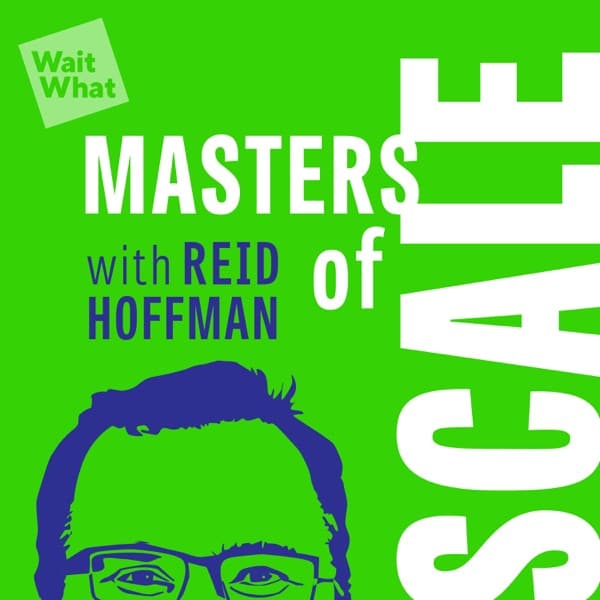 Masters of Scale
Masters of Scale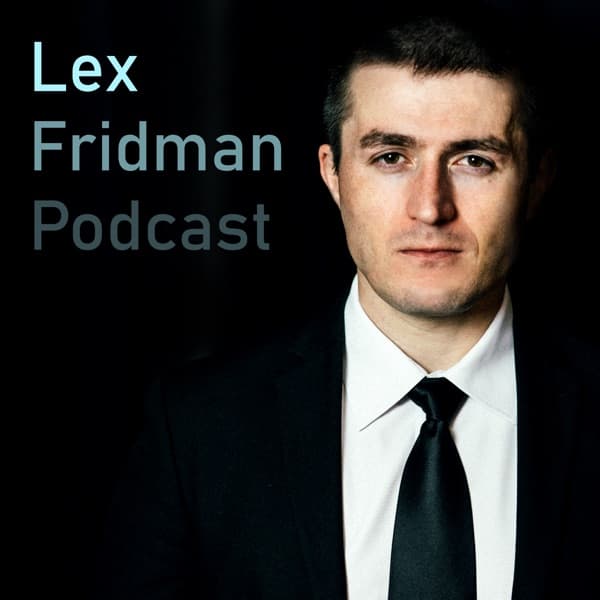 Lex Fridman Podcast
Lex Fridman Podcast All-In with Chamath, Jason, Sacks & Friedberg
All-In with Chamath, Jason, Sacks & Friedberg Modern Wisdom
Modern Wisdom a16z Podcast
a16z Podcast Lenny's Podcast: Product | Growth | Career
Lenny's Podcast: Product | Growth | Career No Priors AI
No Priors AI The Twenty Minute VC (20VC): Venture Capital | Startup Funding | The Pitch
The Twenty Minute VC (20VC): Venture Capital | Startup Funding | The Pitch How I Built This with Guy Raz
How I Built This with Guy Raz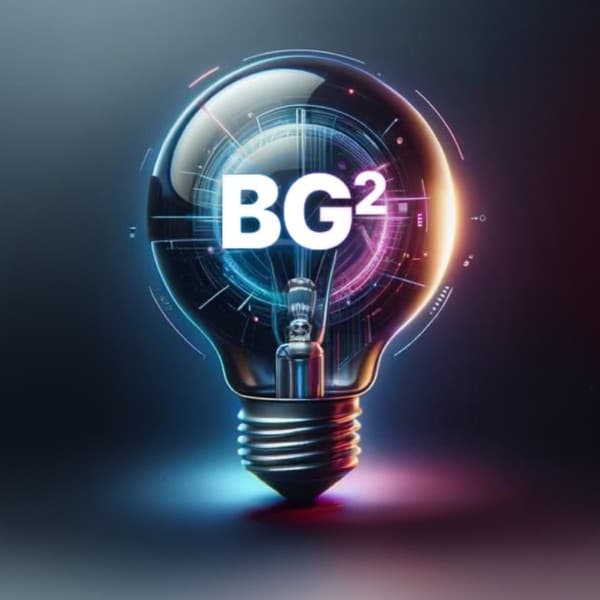 BG2Pod with Brad Gerstner and Bill Gurley
BG2Pod with Brad Gerstner and Bill Gurley TechCrunch Startup News
TechCrunch Startup News Y Combinator Startup Podcast
Y Combinator Startup Podcast

